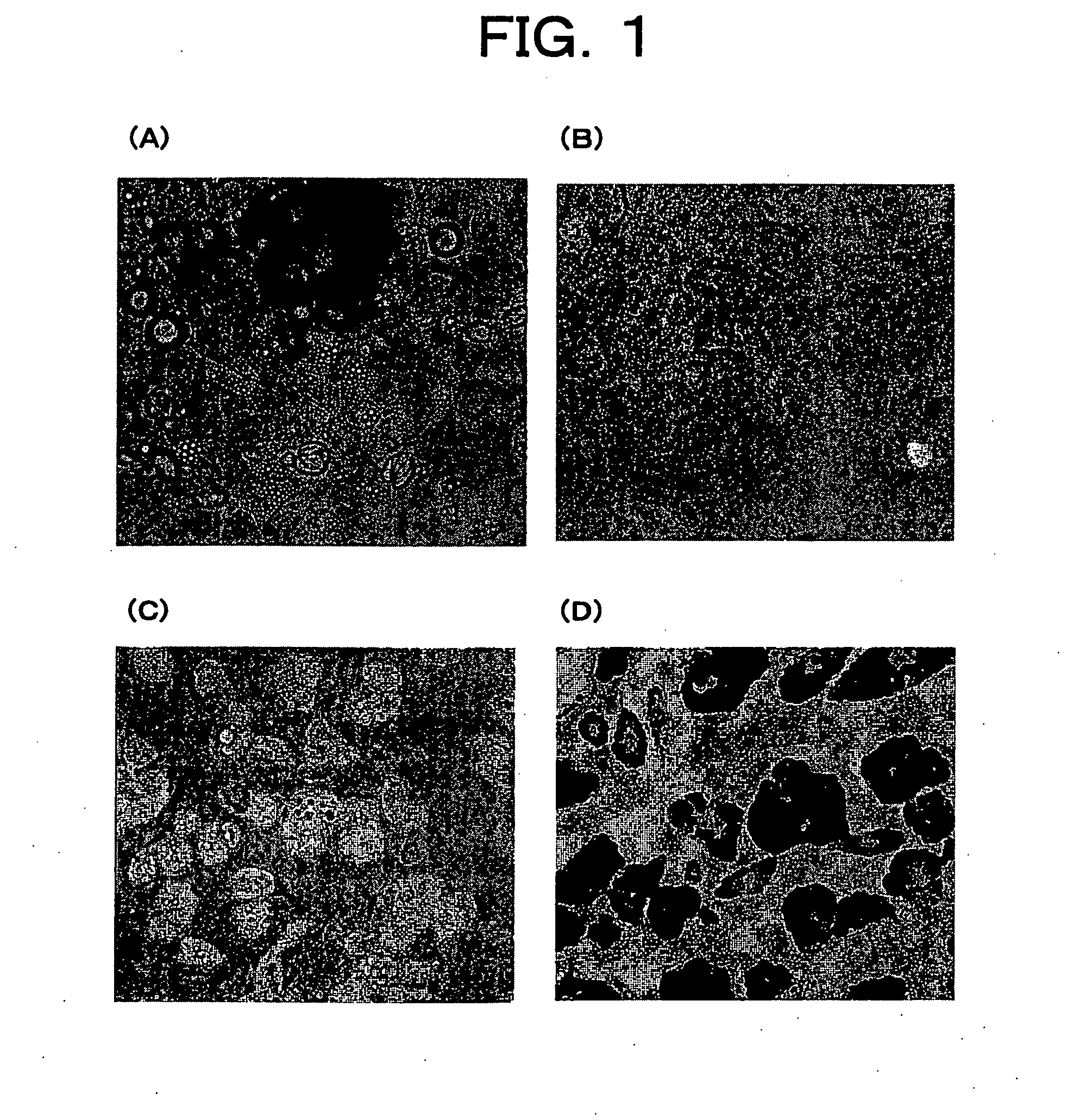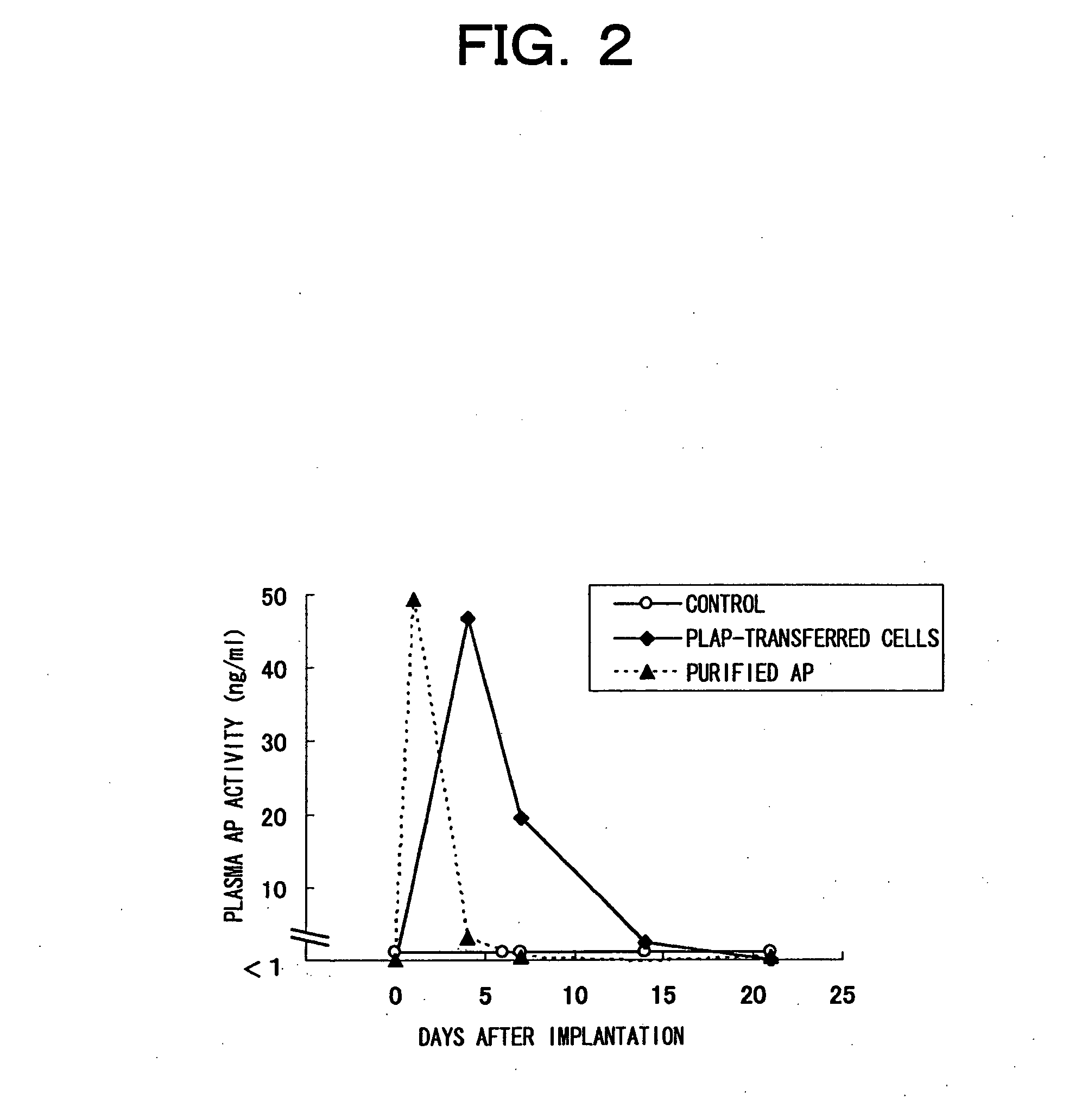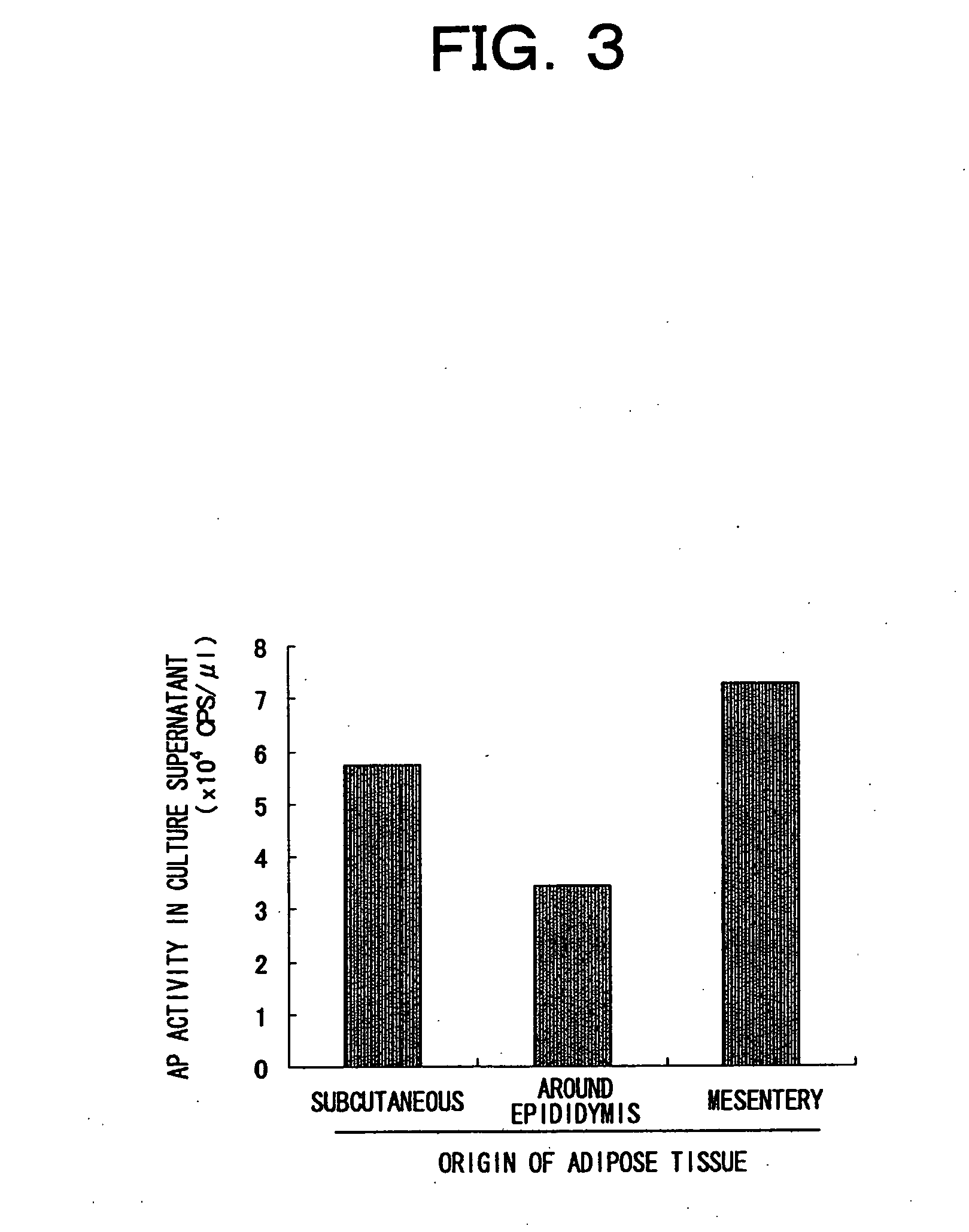Primarily cultured adipocytes for gene therapy
- Summary
- Abstract
- Description
- Claims
- Application Information
AI Technical Summary
Benefits of technology
Problems solved by technology
Method used
Image
Examples
example 1
Primary Culture of Murine Adipocytes
[0086] [Methods]
[0087] Three-week old male ICR mice or four- to five-week old male C57BL / 6 mice (both from Charles River) were anesthetized with diethyl ether, and sacrificed by collection of whole blood from the heart. Next, inguinal subcutaneous fat, or fat surrounding the epididymis, and mesenteric adipose tissue were individually extirpated under sterile conditions. The extirpated tissues were washed with PBS, and then morcellated using a pair of scissors or a surgical knife. This morcellated tissue was digested with shaking at 37° C. for 20to 60 minutes in normal medium (DMEM-high glucose / SIGMA, 10% FCS) comprising 1 mg / mL of collagenase (S1 fraction / Nitta gelatin), and then separated into precipitate and suspended layer by centrifugation (300 g, five minutes).
[0088] The floating layer was further centrifuged once or twice to remove the collagenase by dilution, and then added to a T-25 flask (IWAKI) filled with medium. Bubbles were removed...
example 2
[0093] Transient transfer of thermostable secretory alkaline phosphatase (AP) gene into primary cultured adipocytes, and implantation of transfected adipocytes into mice
[0094] As a model system for gene expression, AP gene, more specifically, SEAP gene (Clontech) or PLAP gene (Goto, M. et al. Mol. Pharmacol. vol. 49 860-873 (1996)) was transferred to primary cultured adipocytes, and changes in AP activity were examined. (Both AP gene products are thermostable and can be easily distinguished from endogenous alkaline phosphatases by thermal treatment.) [0095] [Methods]
(1) Production of Primary Cultured Adipocytes Transiently Transfected with the SEAP Gene
[0096] AP-expressing plasmid (pcDNA3.1-SEAPmh) was constructed by inserting the SEAP sequence, obtained by double digestion of pSEAP2-basic vector (Clontech) with restriction enzymes HindIII-XbaI, into the HindIII-XbaI site of pcDNA3.1Myc-HisA (Invitrogen), which is a vector for expression in mammalian cells.
[0097] For every gene ...
example 3
Production, by Using a Viral Vector, of Adipocytes that Stably Express AP
[0102] [Methods]
(1) Construction of AP- and Control GFP-Expression Vectors
[0103] The PLAP gene was excised from pTK-PLAP using HindIII and BglII, as described in the literature (Goto, M. et al. Mol. Pharmacol. vol.49, 860-873 (1996)). The SEAP gene was obtained by double digestion of pcDNA 3.1-SEAPmh with HindIII / PmeI. The GFP gene was excised from pEGFP-N2 using NotI-NcoI.
[0104] The plasmid, pBabeCLXI2G, used for viral vector production, was produced based on pBabePuro (Morgenstern, J. P. et al. Nucleic Acids Res. vol.18, 3587-3596 (1990)), by excising its SV40 promoter and neomycin resistance genes using SalI-ClaI, and blunting those ends with Klenow fragments, then replacing these with the internal ribosome re-entry site (IRES) of encephalomyocarditis virus (EMCV), which was excised from pIRES2-EGFP by HincII-HincII, and the green fluorescent protein (GFP); then replacing the portion from the long termi...
PUM
| Property | Measurement | Unit |
|---|---|---|
| Time | aaaaa | aaaaa |
| Flow rate | aaaaa | aaaaa |
| Therapeutic | aaaaa | aaaaa |
Abstract
Description
Claims
Application Information
 Login to View More
Login to View More - R&D
- Intellectual Property
- Life Sciences
- Materials
- Tech Scout
- Unparalleled Data Quality
- Higher Quality Content
- 60% Fewer Hallucinations
Browse by: Latest US Patents, China's latest patents, Technical Efficacy Thesaurus, Application Domain, Technology Topic, Popular Technical Reports.
© 2025 PatSnap. All rights reserved.Legal|Privacy policy|Modern Slavery Act Transparency Statement|Sitemap|About US| Contact US: help@patsnap.com



